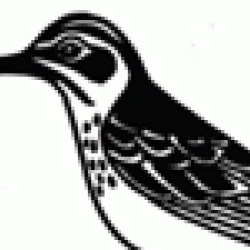Source Institutions
Source Institutions
Add to list Go to activity
Activity link broken? See if it's at the internet archive

This lesson plan revolves around studying the speciation of the Galápagos mockingbirds, which are on display at the California Academy of Sciences. It works well as a pre-visit activity and post-visit activity. In the first part of the lesson, learners will explore the speciation of the Galápagos mockingbirds by solving a logic puzzle. The logic puzzle can be solved by using clues about the different kinds of mockingbirds. Once it is solved, learners will be able to construct a branching diagram showing evolutionary relationships among this group of birds. In the second part of the lesson, learners can review their branching diagram and educators may ask them guiding questions to learn how the lineages are related and to unify their understanding of the material. This activity is standards-based and includes resources for educators and extension ideas.
- 5 to 10 minutes
- 1 to 2 hours
- free per group of students
- Ages 11 - 18
- Activity, Field Trip, Lesson/Lesson Plan
- English
Quick Guide
Materials List (per group of students)
- Mapping Mockingbirds Student Worksheets (11 x 17)
- Mapping Mockingbirds Clues (8 x 11)
- Teacher Answer Sheet
- colored pencils or markers (4 colors)
- picture of the northern mockingbird
Subjects
-
Life Sciences
-
Diversity of Life
- Animals
- Classification
-
Ecology
- Ecosystems
-
Evolution
- Evidence for Evolution
- Mechanisms of Evolution
-
Heredity and Genetics
- Patterns of Heredity
-
Diversity of Life
- Mathematics
-
The Nature of Technology
-
The Design Process
- Problem Solving
-
The Design Process
-
The Nature of Science
-
The Scientific Process
- Conducting Investigations
- Formulating Explanations
-
The Scientific Process
Informal Categories
- Animals
- Nature and Environment
Audience
To use this activity, learners need to:
- see
- see color
- read
- touch
Learning styles supported:
- Involves teamwork and communication skills
- Involves hands-on or lab activities
Other
This resource is part of:
Access Rights:
- Free access
By:
- California Academy of Sciences
Rights:
- All rights reserved, California Academy of Sciences, 2008
